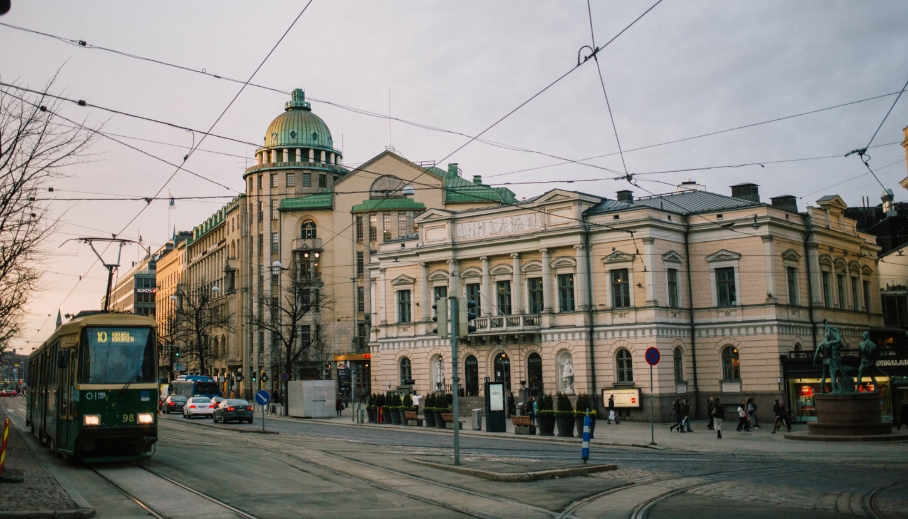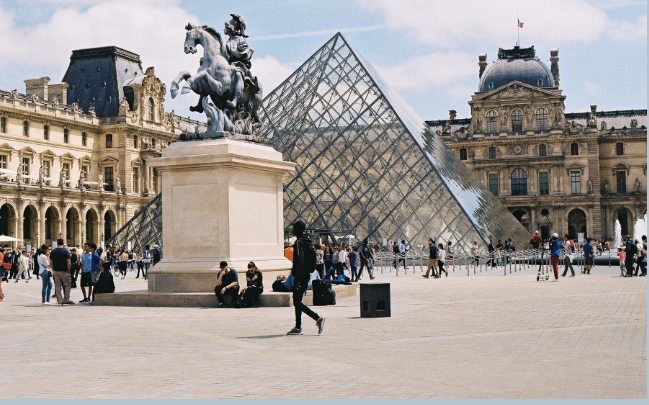Why Andalusia?
A couple of years ago I lived in the south of Spain for several months, studied at the university (I already talked about this experience ), leisurely explored the surroundings and knew for sure that someday I would be back.
The region has a complicated history and crazy landscapes, a lot of styles and cultures are mixed here, it constantly smells of food, and the coast breathes with a salty wind. Andalusia is in no hurry and slows you down, but do not relax much – the route turned out to be saturated.
Transport
The easiest option is to fly to Seville from Warsaw (Modlin) on Ryanair. If you’re lucky, a one-way promotional ticket will cost € 30. An alternative airport nearby is Jerez de la Frontera. You can try to collect a low-cost route from Vilnius or Kiev with a connection, for example, in Barcelona or Madrid. Look for domestic flights from Vueling, there are also frequent sales.
A special EA city bus runs from Seville airport to the center , the fare costs € 4, you can get there in half an hour, you can find the schedule and route here .
To move around Andulucia with a breeze, you can rent a car , or you can trust buses and trains. They walk properly, although difficulties with finding information and schedules may arise. Your friends are the Renfe sites (for trains and trains), Alsa and Damas (for buses) and this site (for trips around the province of Cadiz). Read more about the local transport system here .
Route
Write down the recipe for a concentrated week in Andalusia: Seville – Cordoba – Ronda – Setenil de las Bodegas – Cadiz – Sanlúcar de Barrameda . My advice: to stay for a few days in Seville (I stayed at Hostel One ) and ride to Cordoba and Ronda from there, and then move to Cadiz (for example, in Pension España ) for a couple more nights.
“You seem to be in the middle of a movie about the Middle Ages”
Seville
Royal and solemn Seville is the capital and largest city of Andalusia. A city can tell a complex story in which nations, cultures and religions are mixed. The Romans settled here, then the centuries-old Arab caliphate reigned, in the end, the Spaniards conquered the land. And when America was discovered, a golden age came in Seville and the city turned into an important trading hub – all thanks to the powerful shipping Guadalquivir (this is a river), from which the path to the New World began.
It’s nice to stroll through the magnificent gardens among palm trees, fountains and exotic birds and flowers, see the white-blue patterns laid out with a small tile on the ground, or on a bench, or on the walls, have a picnic on the grass while it’s still green, because in the summer the aggressive sun leave a yellow, dry and hard carpet from her.
The main attractions can be circumvented in a day, but Seville deserves a more thoughtful study – stay here at least a couple more. What you definitely won’t miss is the main Gothic cathedral Catedral de Santa María de la Sede (Av. De la Constitución) and the Royal Alcazar (Patio de Banderas) – both there and there you can touch the centuries-old power and the same confused history .
A very beautiful building surrounded by a moat, which I mistook for some royal palace (you never know how many there are!) Turned out to be a university in the building of a former tobacco factory (Calle San Fernando, 4) . Open on weekdays from 8 am, admission is free.
The tricky canopy over Encarnación is the Metropol Parasol , popularly known as Las Setas, that is, “mushrooms.” Under it there is a souvenir shop, an archaeological museum and various institutions, and for € 3 you can climb to the observation deck.
Walk to the Spanish Square (Plaza de España) – there is a steep palace Moorish places and places of art deco. A canal flows along the palace, and the building itself is cut with niches, each of which is dedicated to some Spanish province and is decorated with a coat of arms, map and pictures with important people and events. There are 48 such niches in total, you can choose the most beautiful.
I arrived in Seville exactly at the beginning of Holy Week. Semana santa, that is, the week before Easter is the most important religious event of the year and the most valuable tradition. In general, a holiday is celebrated in every city and town, but in Seville they are especially kind to it and organize the most large-scale celebrations. It looks like this: each church organizes a procession, builds an installation with a throne for St. Mary, places a statue on it, decorates it as expensive and richer as possible and slowly carries it through the streets of the city. The procession is accompanied by an orchestra, people in traditional costumes with tall caps with slits for the eyes – everything looks very serious and dramatic, and you seem to be in the middle of a film about the Middle Ages. All week the streets smell of incense, the city lives on a holiday schedule (read: almost everything is closed), and the townspeople are smart and inspired. Just walking becomes difficult – many streets are blocked by processions, and many are turning into stands. In general, coming to Seville during Semana Santa is an interesting cultural experience, but if you are very scared by the crowds or just want to see the city everyday and relaxed, it is better to choose other dates for the trip.
Ronda and Setenil de las Bodegas
Ronda with a white blanket creeps up the mountain over a deep gorge. The main local attraction is the majestic stone Puente Nuevo , or New Bridge. The new one, of course, is relative – he is almost three hundred years old. Below it looks even more impressive, however, the descent to the foot is temporarily closed for repairs.
Entertainment in Ronda is simple and affordable: take a walk along the street and in the footsteps of Hemingway along the abyss, carefully examine the expanses, cautiously look at the gorge a hundred meters deep, climb rocks. You can approach the Arab baths (Calle Molino de Alarcón, 11) or what is left of them. You can explore the local bullring (Plaza de Toros) , which, incidentally, is the largest in the country by area. In Andalusia, for centuries, this tradition has been treated very reverently, but today opinions differ widely. You can try to understand what all this means for locals, in the museum inside the arena, the entrance costs € 6.50.A bus runs from Seville to Ronda . It takes about two hours to drive along a beautiful highway, outside the window there will be mountains and meadows on which goats are grazed neatly, you will give € 13 for a ticket.
17 km from Ronda and a half hour drive there is a tiny village with a poetic name and crazy landscapes – Setenil de las Bodegas (Setenil de las Bodegas) . It is built on a mountainside, it seems that it can barely hold on, but in fact it has been standing for years with confidence. Many houses are, in fact, cool caves, huge blocks of stone hang over the streets, and locals walk quietly under them – as if it should be so. Architectural savvy can be confusing: I want to listen to a couple of lectures on urban studies and urban planning from these guys.When you walk around under the rocks, be sure to go up the streets of calle de la Cantareria Baja and Cantareria Alta – the best view of Setenil is worth a few minutes of cardio.
You can get here from Ronda by bus for € 1.8, tickets should be bought from the driver for cash, the schedule is here .“Enormous stone blocks hang over the streets, and locals walk quietly under them – as if it should be so”


